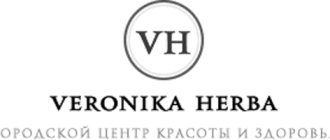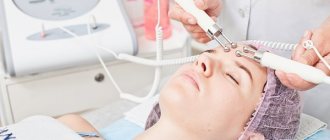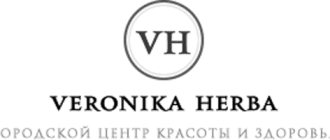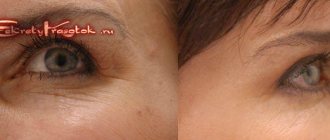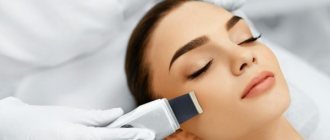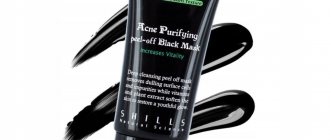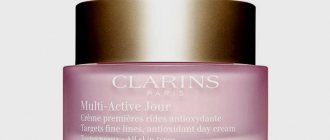From this article you will learn:
- What is mesothread for facelift?
- Mesothreads for face lift: indications and contraindications
- What are the advantages of mesothreads for face lifting?
- What types of mesothreads are there for face lifting?
- How to implement mesothreads for a facelift
- How does a facelift with mesothreads work?
- What effect do mesothreads give for a facelift?
- Do mesothreads for face lift have side effects?
- What to do before and after the mesothread facelift procedure
- Facelift with mesothreads and post-procedure care
- What procedures can be combined with mesothreads for a facelift?
- What to pay attention to before introducing mesothreads for a facelift
- Mesothreads for face lift and the price of the procedure in a beauty salon
In modern cosmetology, the latest technologies to combat age-related skin changes are constantly being developed. But not every new correction method can revolutionize this area. The procedure using mesothreads for face lifting is an innovation that can actually slow down the process of gradual skin changes with age.
What is mesothread for facelift?
Mesothreads
- These are specially processed fibers that are placed into the skin to reduce its stretching and increase elasticity. This procedure is aimed at correcting the oval of the face, tightening the skin in the cheek area and nasolabial folds.
Mesothreads are made of polydioxanone. The surface of the fiber is coated with polyglycolic acid. Both materials have been used in medicine for a long time, their effects on the human body are well known, and therefore they are completely safe. Note that mesothreads are used not only in cosmetology, but also in other areas of medicine (for example, in eye surgery).
This technique was created on the basis of acupuncture, which allows not only to achieve a cosmetic effect, but also promotes relaxation.
The use of mesothreads (thread lifting, bio-reinforcement) is not only the newest way to restore youthful skin, but also a true revolution in aesthetic cosmetology. The operation allows you to achieve the results of four rejuvenation methods at once:
- Botox injections (“beauty injections”);
- Laser lifting;
- Elimination of voids between the skin and tissues by introducing special gels;
- Using oxygen-based products (usually involves the use of special cosmetics designed to saturate the skin with active substances).
Speed is the biggest advantage of a mesothread facelift. According to patient reviews, the procedure for inserting threads takes about an hour, so it can be done without disturbing the usual rhythm of life.
Recommended articles on the topic:
- Facial mesotherapy procedure: pros and cons
- Beauty injections: types of drugs, reviews
- Placental therapy is the secret of eternal youth
Complications of the procedure –
Most types of mesothreads are installed using sharp-pointed needles, which cut tissue and can damage blood vessels and nerves if inserted too deeply into the dermis. Accordingly, the most common complications will be bleeding and hematomas. Numbness of the skin due to injury to nerve trunks is quite rare. If the thread is inserted into the tissue using a blunt-ended cannula (through a puncture of the skin), then the occurrence of the above complications is practically excluded, including the absence of swelling .
Comparison of needle tips and cannula –
Other common complications are exacerbation of herpes and infectious inflammation of the skin at the sites where the needle was inserted. The latter most often happens due to violations of the rules of asepsis and antisepsis, as well as poor postoperative care by the patient of the skin surface at the sites where the needle was inserted. Moreover, if when the threads are inserted too deeply, bleeding and hematomas occur, then when the threads are inserted too superficially, the threads can contour through the skin. When using mesothreads of a smooth linear type, thread migration is possible.
Well, the most common complication is the lack of any aesthetic result. As we said above, the effect of mesothreads can only be seen in patients with fine-wrinkle type of aging. But even in this type of patient, the effect may be absent, for example, due to the individual characteristics of the patient, causing the biodegradation of tissue threads to be too slow. Thus, the effect will be absent not only if the mesothreads are destroyed in the tissues too quickly, but also if they are destroyed too slowly.
Mesothreads for face lift: indications and contraindications
Mesothreads help tighten the skin, restoring an attractive appearance to the face, but they are not able to completely eliminate deep folds and wrinkles. For this reason, thread lifting is indicated only when the skin has not lost its natural elasticity, but the first signs of age-related changes are already noticeable.
Mesothreads are used for the face in the following cases:
- Wrinkles in the forehead area (vertical, horizontal, between the eyebrows), which Botox cannot always cope with;
- Nasolabial fold and labiomental wrinkles;
- Nasolacrimal groove;
- Purse-string wrinkles;
- Ptosis (drooping) of the tissues of the cheeks and submental area;
- Periorbital wrinkles (hernia formations in the tissues of the lower eyelids);
- Folds near the ears;
- Flabbiness and ptosis of the soft tissues of the face;
- Drooping of the outer edges of the eyebrows.
Cosmetologists call the average age when the need for face lifting arises 35 years. However, to prevent age-related changes in the skin, mesothreads for lifting the oval of the face can be used as early as 25 years of age.
Very thin guide needles make it possible to introduce mesothreads with maximum precision, which makes it possible to perform vector lifting and 3D facial modeling without surgical interventions. And in combination with the use of special filler gels, bioreinforcement gives truly excellent results.
Mesothreads are also used to improve the entire body.
A lift with threads up to 9 cm in length will help restore the beautiful appearance of the skin of the thighs, buttocks, knees, and arms that have lost elasticity, and eliminate ptosis (sagging) of tissue on the abdomen and other parts of the body.
Thread lifting of the skin of the abdomen is now especially popular if, for example, it has not recovered after childbirth.
The neck often reveals a person's true age. Defects in the appearance of this part of the body can also be corrected by introducing mesothreads. To correct this zone, linear threads are used, the number and size of which depend on the individual characteristics of the patient.
Breast lifting using mesothreads does not require incisions, so even the smallest scars are excluded after the procedure. Spiral fibers are usually used for this area, as they have the property of returning to their original shape after stretching.
With the help of mesothreads of this variety, the décolleté area is successfully corrected. But a specialist can choose other options for polydioxanone fibers. Despite the wide possibilities of tightening with mesothreads, the effect sometimes does not meet the expectations of patients.
It is not recommended to carry out the procedure in the following cases:
- For bacterial and viral infections;
- During pregnancy, lactation;
- When there are changes in the blood clotting index;
- In inflammatory processes of the soft tissues of the face;
- For thick skin;
- With intense ptosis of soft tissues;
- For oncological diseases;
- For diabetes mellitus;
- If you are allergic to painkillers.
Read material on the topic: Laser facial skin rejuvenation: useful tips and recommendations
Contraindications
While the procedure is safe, you should take into account the circumstances that impede the procedure:
- period of bearing a child, breastfeeding;
- oncological diseases;
- skin tendency to scarring, tissue atrophy;
- an inflammatory process accompanied by an increase in body temperature and general malaise;
- diseases that require correction of sugar levels in the body.
What are the advantages of mesothreads for face lifting?
There are proven facts showing the benefits of thread lifting. So, seven reasons to use mesothreads to lift the oval of the face:
- A large number of studies have confirmed the hypoallergenicity, biocompatibility and safety of the thread material – polydioxanone. When a lift is performed correctly, contraindications and the risk of side effects are eliminated or minimized;
- Bioreinforcement is accompanied by minimal damage to the skin, so the unnoticeable punctures remaining after the procedure quickly disappear and leave no traces;
- Due to the fact that the mesothreads are very thin, they are absolutely invisible under the skin;
- With the correct introduction of fibers, micro-effusions of blood do not occur. Even when lifting with mesothreads, the eyelids do not leave hematomas, which are inevitable with blepharoplasty;
- The thread lifting procedure is performed under local anesthesia;
- A facelift with mesothreads does not require a hospital stay or long rehabilitation, and the duration of the effect is 1.5-2 years;
- The results of threadlifting are comparable to surgical lifting.
Pros and cons of the technique
| Advantages | Flaws |
|
|
What types of mesothreads are there for face lifting?
In cosmetology, three types of mesothreads are used depending on the intensity of skin tightening. The specialist chooses the appropriate option based on the condition and characteristics of the skin of the corrected area.
Linear threads
This is the main type of mesothreads. It can also be called preventive. It slows down the aging process of the skin, increases its elasticity by activating the synthesis of its own collagen.
Indications for use:
- Increased skin elasticity;
- Elimination of fine wrinkles around the lips;
- Changing the shape of the lips;
- Strengthening the medial area of the neck.
Spiral threads
This type of mesothreads for face lifting is used to restore volume to the tissues of the cheeks and cheekbones, to eliminate sagging skin.
Indications for use:
- Double chin correction;
- Changing drooping eyebrows;
- Elimination of linear wrinkles;
- Correction of nasolabial folds;
- Facelift.
Needle threads (with multi-directional notches)
Bidirectional teeth are applied to the surface of the needle threads. These mesothreads tighten fabrics well and are suitable for a variety of purposes.
Indications for use:
- Correction of the middle and lower part of the face;
- Skin tightening;
- Body and face contouring;
- Lifting of the lateral lines of the neck;
- Skin tightening of all parts of the body (use needle mesothreads together with linear ones).
Read material on the topic: Facial mesotherapy procedure: pros and cons
Indications for thread lifting and expected effect
The main indications for thread lifting include:
- facial wrinkles on the forehead, in the area of the nasolabial triangle;
- shaved;
- changing the oval of the face;
- gravitational ptosis;
- "double chin;
- wrinkles around the eyes, lips, near the nose;
- drooping eyebrows;
- sagging cheeks.
Thread lifting gives a quick lifting effect. After the procedure, the oval of the face becomes more expressive, nasolabial and eyebrow folds are reduced, and wrinkles in the periorbital area are smoothed out. Using this technique, it is possible to lift drooping eyelids, change the position of the eyebrows, after which the look will become radiant and open.
How to implement mesothreads for a facelift
1) Consultation with a cosmetologist.
During the initial appointment, the doctor notes areas that need improvement and draws up a plan for the upcoming facelift using mesothreads with the number of injections required.
2) Preparation for the procedure.
The client takes a comfortable position, adjusts, and if necessary, a cream with an anesthetic is applied.
3) Operation.
The patient is injected with mesothreads into the areas of the face that need correction.
4) Recovery.
After completion of the procedure, the skin surface is disinfected and moisturized using a special cream. The punctures heal within a short time, leaving no traces.
How the procedure works in our clinic
Before proceeding with a thread lift, a cosmetologist must conduct a computer diagnostics of the skin. For this purpose, special equipment is used to study in detail the condition of the skin, the depth of wrinkles and a number of other important indicators.
Based on the data obtained, the specialist determines the type and number of threads needed to correct a specific problem area. After this, the skin is cleansed and an anesthetic is applied.
Then the doctor marks the puncture points and draws the lines for the future location of the threads. In the places marked with a marker, small punctures are made through which the threads are inserted. They are securely fixed under the skin and prevent it from sagging.
The duration of the procedure depends on the amount of work. The average duration of the manipulation is 30-40 minutes.
We'll help you choose the right procedure
Describe in this form the problem you are looking for a solution. Our clinic specialists will help you choose exactly the procedures that will suit you!
By clicking on the “Send” button you agree to the privacy policy
How does a facelift with mesothreads work?
The entire operation begins with disinfection of the affected area. An anesthetic cream is then applied to the area. After 15 minutes, the doctor begins the procedure for introducing 3D mesothreads. How many fibers do you need for a facelift? The required amount of material is determined by the planned result. For example, for the area around the eyes, the smallest number of threads is 10. The average number of mesothreads required for a full face is from 50 to 100.
Very thin acupuncture needles are used for the procedure. Such a needle with a thread fixed at its end is inserted into the skin of the defective area, starting from the bottom in an upward direction. First, the doctor stretches the skin to the desired position.
The needle is inserted to a certain point parallel to the surface of the face. Then, by pressing, the edge of the mesothread is fixed. The polydioxanone fiber is detached from the guide needle and placed in the skin, and the needle is removed. The skin is fixed in the intended position and tightened.
The whole procedure takes no more than 20-30 minutes. The effect of a facelift with mesothreads is comparable to the results of plastic surgery. To recover, the patient needs an average of 1-2 weeks, less often – one month. The duration of rehabilitation depends on many factors, such as age, the ability of tissues to regenerate, proper care, hygiene, the professionalism of the specialist, the quality of the operation performed and the material used. During the first time after correction, the patient may experience swelling and soreness of the facial tissues. To relieve discomfort, the doctor may prescribe painkillers.
Read material on the topic: How to remove wrinkles on the face: the most effective methods
Important: chemical composition of mesothreads
As we said above, at the moment almost all Korean, Russian and European manufacturers of mesothreads make them from the inexpensive surgical suture material “polydioxanone” (PDO). This choice is explained by the high biological compatibility of this material, but most importantly, by its extremely low cost. Threads made from PDO are destroyed faster in tissues than threads made from any other materials, and to slow down this process, some manufacturers apply gold plating or a layer of polyglycolic acid (PGA) to the surface of PDO mesothreads.
The second option is threads made from pure caprolactone (PLC), but like polydioxanone, this material also has only minimal biostimulating effects. The third option includes threads made of caprolactone, on the surface of which L-polylactic acid is applied. Such a combined material is called the term “copolymer of L-lactide with caprolactone” (PLLA+PLC). Thanks to polylactic acid, this type of thread has a strong biostimulating effect and really affects the production of collagen in the skin. The same effect is achieved, for example, with the Sculptra filler, which also consists of polylactic acid.
Also, one Russian manufacturer makes mesothreads from 100% polylactic acid. It would seem that it could be better, but structurally these threads belong to the “smooth linear type”, and such threads tend to migrate in tissues. Those. you can place such threads, for example, in the cheek area, and after a month they can be found in a chaotic pattern in the mouth, around the eyes or on the neck. This happens due to facial movements and the absence of notches (hooks) on this type of thread that would securely fix them at the insertion site.
What makes up the effectiveness of mesothreads? –
Mesothreads are the thinnest of all types of threads used for thread lifting. They are not able to serve as a reinforcing frame or retain displaced tissue (i.e., create a lifting effect). Mesothreads have only a biostimulating effect on the skin, which is mediated by the influence of 2 factors - mechanical and chemical. Mechanical biostimulation of tissues is associated with trauma to tissues with needles, with the help of which threads are inserted into the dermal layer of the skin. Such an injury automatically leads to increased regenerative processes and blood microcirculation.
The nature of chemical biostimulation depends on the chemical composition of the threads, and the latter determines 2 points. Firstly, the rate of biodegradation of threads in tissues, on which the total duration of their biostimulating effect will depend (24stoma.ru). Speaking about the biodegradation of threads, two parameters are usually important - 1) the time after which their fragmentation begins, 2) complete destruction. For threads made from regular PDO, fragmentation occurs in 30 days, and complete destruction occurs in just 4-6 months. Somewhat longer for threads made of L-lactide copolymer with caprolactone, even longer for threads made of PDO with gold plating (up to 6-8 months).
But the second and most important thing is that threads of different compositions have different severity of stimulating effect on the fabric. Biodegradation of threads made from a copolymer of L-lactide with caprolactone occurs with the release of molecules of active polylactic acid, which directly stimulates the function of fibroblasts, leading to increased collagen production. As for threads made from PDO, PGA or pure caprolactone, in response to their introduction, an aseptic inflammatory reaction (foreign body reaction) develops in the tissues, which occurs with the development of leukocyte infiltration and migration of macrophages.
Most authors note that after installing PDO mesothreads, the skin becomes more elastic, and conclude that this is due to stimulation of collagen production. However, inflammatory infiltration of tissues is always accompanied by their compaction (you probably remember that edematous inflamed tissues are always increased in volume and tense). That is why, in our opinion, it is better to choose mesothreads made from a copolymer of L-lactide with caprolactone, and in second place - mesothreads made from PDO with gold plating.
What effect do mesothreads give for a facelift?
As a result of the introduction of mesothreads, a dense frame is formed, creating a new, more aesthetic appearance of the face or other part of the body on which the patient underwent bioreinforcement. But more important changes begin later: when polydioxanone fibers dissolve, special substances are released that trigger regeneration processes in the skin through the following processes:
- Stimulation of blood circulation;
- Intensive saturation of skin cells with oxygen;
- Providing tissues with nutrients;
- Launching the natural synthesis of collagen and elastin.
After six months, mesothreads disintegrate into water and carbon dioxide. By this time, new connective tissue has already formed at the site of their insertion, holding the skin in the desired position.
A facelift with mesothreads has a beneficial effect in several directions. Threadlifting has a positive effect on:
- Deep layers of the dermis, stimulating internal processes;
- The outer layers of the skin, eliminating wrinkles and other imperfections.
Usually the effect of the operation is visible immediately, but for a more reliable result it is advisable to repeat the session after 14-16 weeks.
Mesothreads for face lift: before and after photos
Features of using threads
Cosmetic material for face lifting differs not only in its texture, but also in its principle of action. Some dissolve after a few months, maintaining the tightening, while others do not dissolve at all.
Absorbable
The fibers of such implants completely degrade in the soft tissues after 6–12 months. All that remains of them is the wrapping material, which forms a hard capsule formation of connective tissues. These surgical threads are based on polylactic acids and polydiaxanone. Outwardly, they resemble fishing line with microscopic thickness and small notches. In this way, it is attached to the inner layers of the dermis, which provides it with good elasticity.
Do mesothreads for face lift have side effects?
Like any other operation, a facelift with mesothreads, in addition to the obvious advantages, also has certain disadvantages. Significant disadvantages include possible side effects
:
- Swelling and even swelling of tissues;
- Pain (very rarely - temporary loss of sensitivity);
- Bruises, bruises, hematomas;
- Sensation of the presence of a foreign body in the tissues (one to two days);
- Lumpiness of the skin.
The risk of adverse reactions directly depends on the professionalism of the doctor performing the lift. Even a minor violation of technology can lead to consequences that only surgical intervention can correct. Therefore, when choosing a specialist for thread lifting, make sure of his competence, which must be confirmed by certain documents. Pay attention to patient reviews of his work.
Usually, a facelift (and other areas) with mesothreads is easy, and side effects (if they occur) quickly disappear on their own.
But due to the inexperience of the doctor, the following complications
:
- Severe distortion of the face with the formation of folds. The reason for this complication is the lack of professionalism and experience of the cosmetologist in working with a thin needle-thread guide. This defect can leave marks on the face for up to two years;
- Knots on the skin arise due to non-straightening or incorrect position of the mesothreads in the tissues. This defect will remain on the face until the fibers are completely absorbed, which will take about six months. No doctor can fix this marriage.
Read material on the topic: How to care for facial skin: home care and salon treatments
Cost of thread lifting procedure
The cost of a thread lift depends on the type of threads used and the quantity required.
| Cost of the procedure | |
| Mesothreads 1 pc. | 1,200 rub. |
| Mesothreads from 10 pcs. | 1,000 rub. |
| Siluet Soft threads | 17,500 rub. |
| Notched thread | 5,000 rub. |
| Double Needle | 20,000 rub. |
| FreeFloating | 10,000 rub. |
| Aptos Needle 2G Soft | RUB 44,800 |
| Aptos Theread 2G Soft | 42,000 rub. |
| Aptos Excellence Visage Soft | RUB 48,200 |
| Resorblift 90% Plla 8*250 mm. | 60,000 rub. |
What to do before and after the mesothread facelift procedure
Before the procedure
.
- Two hours before surgery, it is recommended to stop smoking, drinking alcohol and intense physical activity, and do not wash your face with warm water.
- For seven days before and after the procedure, it is not allowed to use products containing acetylsalicylic acid and aloe vera, antihistamines, visit the sauna, solarium, or expose the skin to extreme temperatures.
After the procedure.
Not recommended:
- Chew actively – for 24 hours;
- Do massage and exercise – 14 days;
- Take alcohol, aspirin, anticoagulants orally for three days.
Recommended:
- To reduce swelling, take an elevated position of the head for sleep - three days;
- When handling cosmetics, be gentle on your face, avoid pressing and rubbing during the first days.
Facelift with mesothreads and post-procedure care
- For washing, you should use exclusively filtered water and special delicate cosmetics (preferably with active oxygen).
- Choose makeup products with a high UV protection index.
- Use oxygen masks, as they help prolong the effect of the procedure.
- After a facelift using mesothreads, do not perform hyaluronic rejuvenation for six months.
- Avoid laser resurfacing procedures, abrasive scrubbing, and acid peeling, as they can accelerate the chemical decomposition of mesothreads.
- Try to eat healthy, reduce or eliminate the consumption of coffee, alcohol, nicotine, sugar, etc.
Service cost
The implantation of threads must be carried out by a doctor who has undergone special training in the treatment room.
Before the manipulation, an informed consent is signed and a photograph is taken in five projections. The forehead lift itself will cost 20,000-50,000 rubles.
Cost of mesothreads:
The most budget-friendly ones are linear ones made from polydioxanone, the price is from 700 to 1000 rubles. a piece.
Needle-shaped with notches - from 1,500 rubles.
Threads made from a copolymer of L-lactide with caprolactone are significantly more expensive. Their cost depends on the type:
- “Aptos Nano Vitis-4” – from 1500 rubles;
- Screw and Double Screw from PDO - from 1500 rubles;
- GOG – 2300 rub.
What procedures can be combined with mesothreads for a facelift?
The correct combination of thread lifting with other cosmetic surgeries will help make the result of the fight against age-related skin changes more noticeable, effective and lasting. So, what procedures can be combined with a facelift using mesothreads?
- Contour plastic. Its essence is to fill wrinkles and uneven skin with fillers.
- Mesotherapy. It involves the introduction of microinjections of therapeutic agents with anti-aging effects into the skin.
- Laser lifting. Stimulates skin regeneration (renewal) by eliminating its old layers using a laser beam. The procedure allows you to get rid of unevenness and fine wrinkles.
- RF lifting. The process restores collagen and elastin fibers, which stretch as a person ages, and stimulates the body to resume self-sufficiency two to three weeks after a mesothread facelift. To perform laser peeling, you need to wait at least a month.
Read material on the topic: Plasmolifting of the face - a breakthrough in domestic cosmetology
What are fillers
Fillers are filler preparations with a gel-like consistency that are used for contouring of cheekbones, lips, nose, chin, and correction of age-related changes. They fill wrinkles, eliminate asymmetry from the face, moisturize the skin, and restore its elasticity.
Varieties:
- Biodegradable - made of paraffin and silicone. They migrate under the skin, do not dissolve, and can cause allergies. May lead to fibrosis in the injection area. Affordable, provide long-term effect. Every year they are used less and less. Their use is justified on injured areas.
- Biosynthetic - based on animal collagen and calcium hydroxylapatite. Validity period: up to 5 years. Possible migration to other areas, allergic reactions, blockage of blood vessels.
Biodegradable fillers based on hyaluronic acid are the most popular. This component is produced by the human body and is completely compatible with it (it is found in cartilage, saliva, joints). HA in the composition of skin tissue stimulates their regeneration.
The advantages of fillers are the almost complete absence of side effects, skin hydration, and hypoallergenicity. They can be selected according to the degree of density: a less viscous consistency is for wrinkles, a denser one is for contouring different areas of the face.
Buyanov Sergey Yurievich (Expert Doctor):
The use of fillers is similar to the work of a sculptor: increase in those places where there is little, and due to this reduce the volume of excess. The similarity also concerns “hardening of the material” - fixing the filler in the right place. Before this time, it is possible to move under the skin, which leads to unpleasant side effects.
The main disadvantage is the fragility of the result: from several months to one year, rarely longer. After which they are absorbed and excreted from the body.
Fillers in the hands of a professional give a wonderful effect: they smooth out nasolabial folds, crow’s feet, purse-string wrinkles, add volume to too thin lips, and improve the condition of the skin.
Advantages and disadvantages
| pros | Minuses |
|
|
What to pay attention to before introducing mesothreads for a facelift
Nowadays, cosmetic product manufacturers present many different materials, but, unfortunately, not all products are certified. And you shouldn’t forget about this when preparing for a facelift procedure with mesothreads. You need to make sure that the beauty salon or clinic where you are going to have surgery only works with high-quality certified products. Otherwise, this is a violation of the law, and the procedure may harm your health.
The huge demand for procedures using mesothreads has generated supply: more and more salons and clinics are ready to provide such services. But not all of these institutions can afford highly qualified specialists. Without the necessary information, you may well end up with an unqualified cosmetologist. When choosing a doctor, be sure to make sure that he has a certificate and the necessary experience.
A facelift with mesothreads is a very delicate and difficult procedure to perform. It requires serious training and extensive experience from the cosmetologist, and therefore there are few professionals in this field. To avoid getting into an unpleasant situation when choosing a specialist, study the available reviews about his work. It's better if they are only positive.
Having settled on a specific doctor and clinic (or salon) for thread lifting, ask to see a mesothread registration document. Immediately before the procedure, the cosmetologist must provide you with packaging so that you can make sure that its integrity is not compromised and that the contents are sterile. The packaging itself should contain two stickers with information about this product. According to the rules, one of them should be attached to the consent form for the procedure signed by the patient, and the second should be placed on the recommendations for the client issued after the operation.
Following the established procedure is mandatory. The rules are designed to ensure patient safety. Indeed, if complications arise during a mesothread lift, this procedure will help to understand the causes of negative consequences and eliminate analogues of low-quality cosmetic materials.
Types of mesothreads – Mono, Screw, CoG, etc.
If we analyze not the material used to make the threads, but their design (technological) features, then at the moment all mesothreads for face lifting can be divided into 4 types.
Smooth linear thread type (“Mono”) –
To indicate that they belong to this type of thread, some manufacturers add the word “Mono” to the name. Smooth linear type means that the mesothread will be absolutely smooth, without notches. The end section of such a thread will be placed in the hole on the side of the sharp edge of the needle, and the main part of the thread will be located outside (Fig. 4-5). This is the cheapest option for mesothreads. The cost of 1 polydioxanone thread, regardless of size, is about 110 rubles. This is the price at which cosmetologists buy them.
As we said above, the biggest disadvantage of the smooth linear type of threads is that due to the absence of notches (which are designed to fix the thread deep in the tissue), such threads tend to migrate in the tissues towards their lateral ends. And this happens under the influence of facial stress. Theoretically, they can be placed in motionless zones, but tell me - where on the face and neck are there motionless zones? In addition, the installation of this type of threads always occurs with a needle, not a cannula, and that is why their most common complication is the formation of hematomas (24stoma).
Twisted type of threads (“Mono Twin” or “pigtail”) –
The twisted type of mesothreads is designated by the terms “Mono Twin”, “pigtail”. This type differs from the previous one in that not one, but 2 smooth threads without notches are fixed into the hole from the sharp edge of the needle, and along the entire length they will be twisted relative to each other in the form of a “pigtail” (Fig. 6-7). This type of thread is somewhat more effective than the previous one, because... threads twisted relative to each other in the form of a pigtail (about 2 weeks after installation) begin to unravel, thereby slightly increasing the volume of the tissue.
In patients with fine-wrinkle aging and thin skin, they can actually reduce the appearance of small wrinkles and fine lines in the installation area for a certain period. Mono Twin threads from PDO are produced by a very large number of Korean companies and have a purchase price of only about 200 rubles. Mesothreads of the Mono Twin type made from a copolymer of L-lactide with caprolactone are produced by only a few companies, and their cost will be much higher. An example of such threads is
- Aptos® Nano Vitis-4,
- Aptos® Nano Vitis-7.
Thus, when choosing this type of thread, we give preference to the Russian manufacturer Aptos. Moreover, it is worth noting that while the Vitis-4 thread uses a needle as a guide, the Vitis-7 thread uses a safe cannula. If you look at Mono Twin type threads from Korean manufacturers, then only needles are used for their installation (without exception). Installation of 1 Aptos Nano Vitis-4 thread in the clinic costs approximately 1,500 rubles.
Screw type of threads (“Screw” and “Double Screw”) –
The name of threads of this type often contains the word “Screw”, which means “screw”. The screw type means that the smooth thread will be wound in a spiral around a hollow sharp needle from the outside, and its end section will also be fixed into the hole on the side of the sharp edge of the needle (Fig. 8). This type of thread can be divided into – 1) Mono Screw, 2) Double Screw. In the first case, only one smooth thread will be wound spirally around the needle, and in the second case, two threads at once. The cost of such threads will be from 200 and 250 rubles per 1 thread, respectively.
Serrated thread type (CoG, 2D, 3D, 4D) –
In the name of threads of this type of thread you can often see the word “COG”, which in translation means “tooth” (Fig. 11). Patients often call them Kogi threads. Thus, the jagged type means that the threads will have notches that will prevent the migration of threads in the tissues, and also, according to the manufacturers, will perfectly tighten the skin. Compared to other types of mesothreads, they are probably the best, but you should not indulge yourself in the illusion of lifting when using them, because mesothreads are, in principle, too thin and are not able to hold moving fabrics, even with notches.
Cog type mesothreads can differ greatly from each other (Fig. 12). First of all, we are talking about notches, which can be one-sided, two-sided, or multi-directional. The very first Cog threads had single-sided knurls, and over time they were replaced by 2D and 3D knurled threads (the latter differ from each other in that the double-sided knurls are located either in the same plane or three-dimensionally. There is a more modern 4D knurling layout, but this is of great importance primarily for reinforcing and lifting threads, with the help of which it is possible to stretch and hold tissue in a displaced state.
For mesothreads, which in principle are too thin to serve for lifting or reinforcement, it will be very good if the notches are only 3D. The second difference between COG threads from different manufacturers is that both a needle and a cannula can be used as a thread guide. If a needle is used, then there are 2 options for arranging a thread with a needle - a standard linear one (as for smooth “Mono” type threads) and a screw type “Cog Screw” (Fig. 13). Inserting a thread with a cannula is less traumatic and causes fewer complications.
Important: above we talked about COG type mesothreads, but there are other types of threads with notches - reinforcing and lifting threads, which have a significantly greater thickness (compared to thin mesothreads). The greater thickness allows the threads not to dissolve too quickly, and also allows them to hold the load and hold the tissue being moved. These threads include Resorblift® threads, Beaute Lift V-Line® threads (models Rose-2D, Rose-3D and Cog-2D), Aptos® Excellence Visage threads and others. We have listed here only reinforcing threads, but if they are also installed with an additional fixing loop, then they will give not only a reinforcing, but also a lifting effect.
But stretching fabrics with standard COG mesothreads is useless. As we have already said - due to their small thickness and lack of rigid fixation to the ligaments and aponeuroses - they are, in principle, unable to have either a lifting or reinforcing effect. But trying to tighten something with them, for example, using the “loop” technique, which is successfully used when implanting reinforcing threads, is impossible, because this will create a load that thin mesothreads simply cannot withstand and will break. As for the lifting effect from this type of thread, it can be expressed approximately at the level of statistical error (that is, it seems to probably exist, but it seems to be not there).
Manufacturers of mesothreads (thread characteristics) –
* where PDO is polydioxanone, PLLA is polylactic acid, PLLA+PLC is a copolymer of polylactic acid and caprolactone, PGA is polyglycolic acid.
